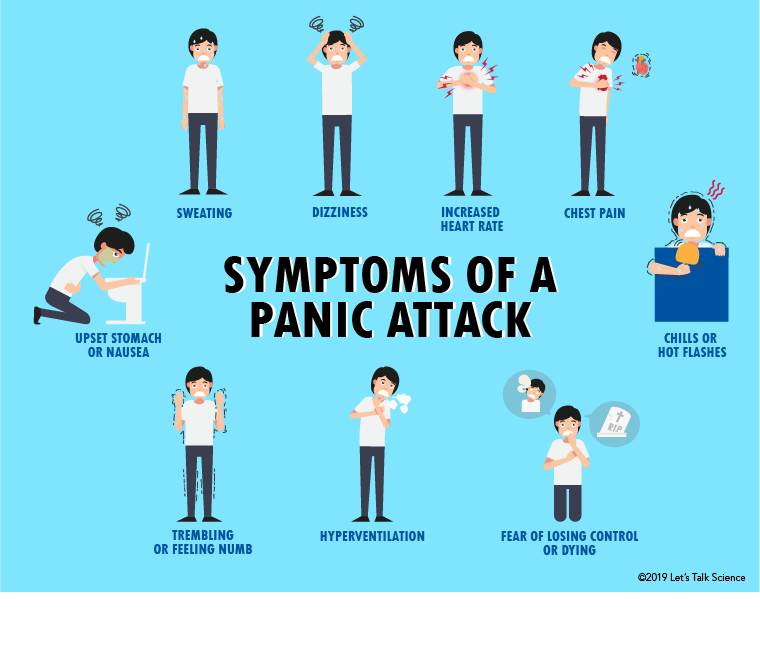A Quick Guide
A panic attack is an intense state of fear that can occur suddenly and without warning, accompanied by physical symptoms such as increased heart rate, sweating, and difficulty breathing. If these attacks recur and lead to fear of future attacks and avoidance behaviors, it may indicate a panic disorder. Seeking professional help is recommended to manage this condition.
What is a panic attack and is it normal?
You may have heard the term ‘panic attack’ from people around you to describe a state of intense fear. For example, a friend right before the exam, the groom or bride prior to their wedding, or the job applicant a few minutes before their interview.
Considering the stressful nature of these situations, experiencing intense fear is normal. However, a panic attack is more than that. It can occur in absence of any real threat, danger, or immediate stressor. It triggers intense physical symptoms. Along with that, frightening thoughts of death, losing control, going crazy or having a heart attack, etc, arise in the person’s mind. These make it a highly distressing experience.
The difference between a panic attack and a panic disorder
Many people undergo isolated incidents of one or two panic attacks which stop when the stressor ends. In contrast, others experience recurrent panic attacks over a short period of time. With time, they develop a fear of experiencing these intense fearful states. Consequently, such individuals adopt avoidance strategies to cope, which only contributes to continuing/perpetuating panic attacks. In short, these people develop a panic disorder.
Why is a panic attack frightening?
Having a panic attack is a terrifying experience for most individuals. This is because it is especially difficult to handle alone and may require medical or professional attention for immediate management. Although it is not dangerous medically, it may have symptoms similar to certain cardiac diseases. For example, some people feel like they are having a heart attack. Thus, it is important to get a medical checkup for distinguishing between the medical or psychological origin of such symptoms.
The scary thing about having a panic attack is that the symptoms can occur quite suddenly and without warning. For example, you may be out with friends having a perfectly normal lunch or driving a car attending a lecture in your class. Thus, this sudden onset of intense fear symptoms which peak within a few minutes generates a feeling of being unprepared in such individuals. They often feel a loss of control over their mind & body and are helpless in front of this condition. Having a panic attack can be quite draining as well both emotionally and physically. This exhibits feeling numb, detached, and exhausted. This has a great influence on a person’s physical health, mental health, social life, and overall quality of life.
Read: How To Deal With Driving Anxiety? Practical Strategies & Techniques

How to identify a panic attack and a panic disorder
To identify whether you are having a panic attack or a panic disorder, look out for the following signs:
Symptoms of a Panic Attack
Panic attack itself is not a mental disorder. However, it can co-occur with other anxiety disorders, medical diseases, substance use disorders, and other mental disorders. Accordingly, it is considered a specifier or co-morbidity in these conditions. The person must experience a state of intense fear which can be discomforting. It can start from a calm state or an anxious state. At least 4 of the following symptoms must be present:
- Increased heart rate
- Sweating
- Trembling or shaking body
- Difficulty breathing or feelings of being choked/suffocated
- Pain in the chest
- Nausea
- Abdominal pain
- Feeling dizzy, faint, or light-headed
- Hot and cold flashes
- Feeling numb or having tingling sensations in the body
- Feeling unreal or detached from oneself
- Fear of dying
- Fear of losing control or going crazy

Symptoms of a panic disorder
In panic disorder, an individual may have the above symptoms of a panic attack. These occur recurrently in multiple episodes. Furthermore, they may the following additional symptoms:
- Intense worry or fear of having more attacks or their consequences.
- Behavioral avoidance to prevent further panic attacks e.g. not doing exercise, going to unfamiliar places, avoiding certain foods to stop future attacks, etc.
- The symptoms cannot be explained by substance use disorders, other mental health conditions, or medical conditions.
Watch: [What is Panic Disorder?]
Associated Features
Some people may also exhibit the following signs:
- A few individuals may experience a nocturnal panic attack i.e. Waking up from sleep in a panicked state. This is different from panic attacks which occur during a fully awake state.
- Pervasive worry about surviving through the day or tolerating stressors of daily life
- Some individuals may misinterpret mild physical or medication side-effects as signs of a fatal disease e.g. interpreting headache as a brain tumor or interpreting increased heart rate as a heart attack etc.
- Other symptoms like uncontrollable screaming, crying, soreness in the neck, headaches, etc may also be observed.
People undergoing panic attacks or having a panic disorder go through a very terrifying experience. Seeking professional help is recommended to learn how to manage it. If you know a loved one going through this, lend them your support and validate their distress as they can really use your help. To learn more about the underlying process, read our article on ‘The Panic Attack Cycle: What happens when you have a panic attack’. To know your unique panic attack cycle to understand your personal experience, check out this article.


